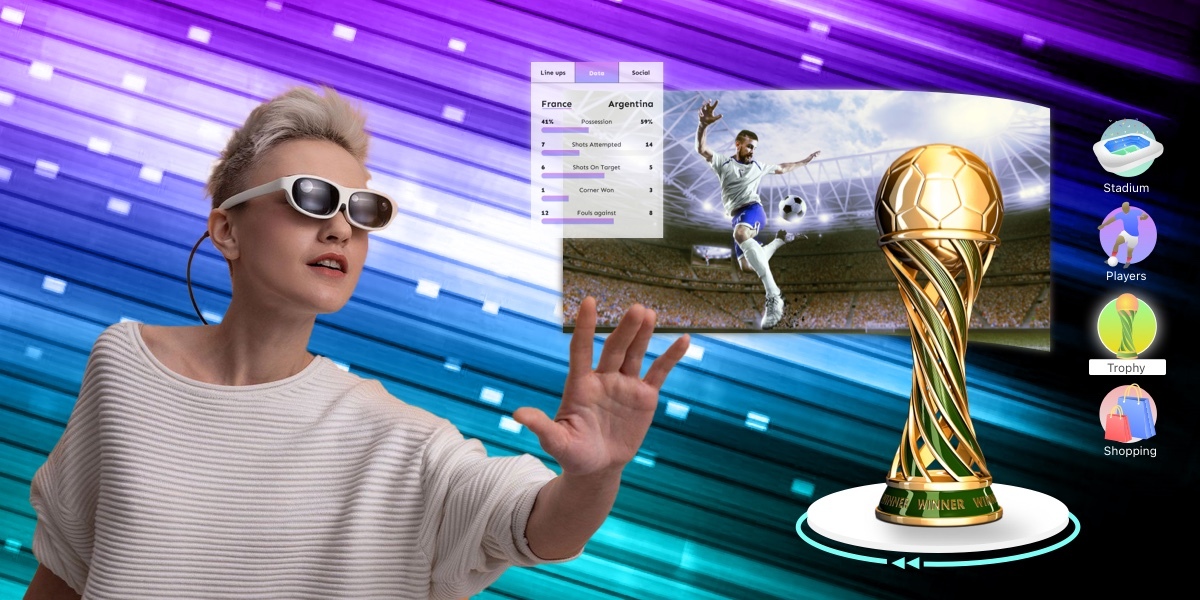
Courtesy of Accedo
Technological innovation and shifts in viewing behaviour have led to a massive boom in the OTT market in the last decade. A report from Juniper Research concludes that the number of active on-demand subscriptions will increase by 65% from 2020 to 2025. The market is extremely fast moving and if video providers want to stay competitive, they need to look ahead at what to focus on next. Here we outline the key features we think will be crucial for OTT in the years ahead.
In-car entertainment
In-car entertainment for passengers is nothing new but with the emergence of autonomous vehicles, there will be a shift in what people spend their time doing while travelling. The idea that drivers may no longer be required to control the car has led to manufacturers focusing more on how to entertain them while on the move. It is likely that video consumption will be the ‘go-to’ activity. Car manufacturers are already coming out with bigger connected screens for this purpose.
Audiences consuming video while travelling in autonomous vehicles give OTT providers another means to distribute content to increase reach and engagement. However, delivering reliable, quality service in this way is not without its difficulties. 5G connectivity is expected to address many of the technical issues associated with providing a seamless, low latency streaming experience while on the move.
Augmented reality
Augmented reality (AR) will keep transforming the video streaming landscape by creating new ways for audiences to engage and interact. Up until recently, gaming has been the primary usage area for this kind of technology but going forward, it will become just as central for video, fitness, sports viewing, shopping, socializing and more. The continued roll-out of 5G will be particularly significant for enabling this new technology as it brings much more bandwidth, something that is important for these types of services.
At the same time, the VR headsets on the market are not yet at the point of mass adoption. This is partly due to a lack of content, leading to poor take-up, inadequate investment and high consumer costs. However, with a bit of time and better headsets or glasses, we will certainly see offerings that are better suited for the masses going forward.
AR glasses are likely to be a ‘companion device’ to supplement, enhance and individualize the user’s experience. Even if all viewers are watching the same content, they will individually decide what supplementary information or experience they want. One family member may want to see additional metadata for the video stream while another is more interested in detailed information about the show being watched, such as location or presenters.

Behaviour-based recommendations
Most video services base their recommendations on previously watched content. Recommendation engines tend to be quite blunt and most do not do a good enough job of bringing significant value for money to the user. People are multi-faceted and existing structures don’t take this into account. This apparent oversight is due to many reasons, but the main factor is the lack of data to build more precise prediction models.
So why isn’t this data available? Current VOD services have too small a catalogue without consistency over time which complicates matters. Too few users also make it challenging to create reliable patterns on which to base recommendations. OTT providers need to build better recommendation engines that leverage the potential of artificial intelligence and machine learning to understand user behaviour. Better recommendation engines will bring value for money to the user at the same time as improving user engagement and retaining customers.
Social watching
Social watching allows viewers to watch the same content from different locations while interacting with each other. Some video providers already offer co-watching functions and it has certainly gained popularity over the past couple of years. COVID and prolonged periods of lockdown and social distancing have certainly accelerated adoption but social watching has all the capacity of going from something nice-to-have to a must-have feature–even in a world post the pandemic. A recent report from TDG highlights that both current users and non-users of social watching express interest in these kinds of functionalities, whether they are forced to socially distance themselves or not.
As a result, we are likely to see social watching expand to become a mainstream added-value feature across more areas of video streaming. Sports viewing is an obvious contender because of the very nature of how fans tend to interact with one another. Social watching can also be hugely enhanced and supplemented by AR when headsets or glasses are mass adopted.
Features powering the future
It will be interesting to see how each of these key interlinked areas develops in the coming years. Whether or not we are in the golden age of OTT streaming is still out for debate but the one thing we do know is that we are entering an exciting time for video providers and users alike. It is also certain that 5G is going to play an important role in enabling many of these features.
About the author:

As Head of Product Sales and Marketing, Markus Hejdenberg is responsible for the sales and marketing strategy for Accedo One, the company’s cloud platform for creating, delivering, and monetizing video experiences. Having previously been Head of Product at Accedo, Markus has a good understanding of the solution, the challenges faced by customers, and the product roadmap.
Markus has extensive experience initiating and managing commercial companies in various sectors of the entertainment industry. Prior to joining Accedo in 2014, Markus was CEO for a startup company offering streaming services for iOS, Android, and web.
A version of this story appears in the June-July 2022 issue of Television Asia Plus.







